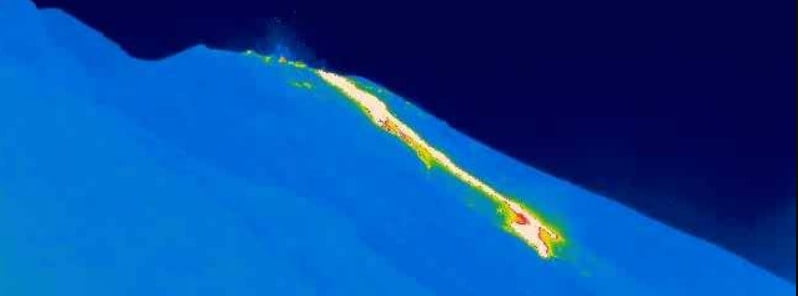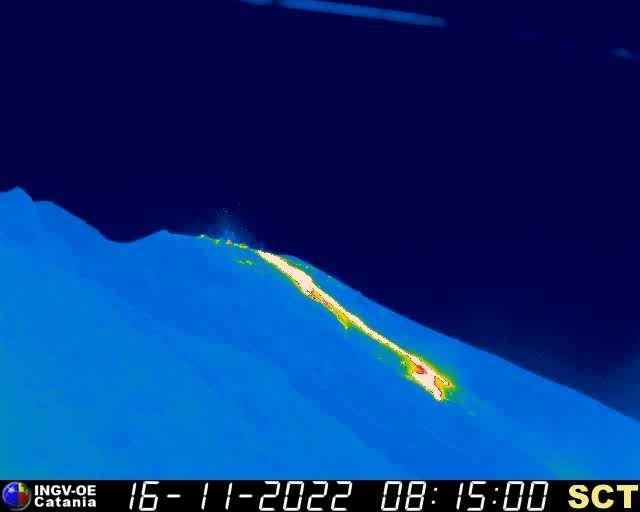New lava flow forms on Stromboli volcano, Italy

A new lava flow formed on Stromboli volcano, Italy on November 16, 2022. The activity follows a major explosive eruption on September 29 and significant pyroclastic flows in October.
According to the information provided by INGV’s Etna Observatory, the network of surveillance cameras observed the flow on the Sciara del Fuoco slope at 06:15 UTC, following an increase in spattering activity from the North Crater area.
The lava front is currently confined to the upper portion of the Fiara del Fuoco.
In conjunction with the volcanic phenomenology, as of 05:40 UTC, an increase in the mean width of the volcanic tremor within the range of medium-high values was observed. Subsequently, the tremor’s magnitude values returned to a medium-low levels. There are no significant changes in the incidence rate and magnitude of the explosions, the observatory said.1
Data from deformation monitoring networks on the island show no significant changes in conjunction with volcanological phenomenology.

A major explosive eruption took place at the volcano on September 29, followed by significant pyroclastic flows in October.
Another major event occurred on the island in August 2022 when heavy rains created massive mudslides that engulfed streets and homes in thousands of tons of mud.
Geological summary
Spectacular incandescent nighttime explosions at this volcano have long attracted visitors to the “Lighthouse of the Mediterranean.”
Stromboli, the NE-most of the Aeolian Islands, has lent its name to the frequent mild explosive activity that has characterized its eruptions throughout much of historical time.
The small, 924-m-high (3 031 feet) island is the emergent summit of a volcano that grew in two main eruptive cycles, the last of which formed the western portion of the island.
The Neostromboli eruptive period from about 13 000 to 5 000 years ago was followed by formation of the modern Stromboli edifice. The active summit vents are located at the head of the Sciara del Fuoco, a prominent horseshoe-shaped scarp formed about 5 000 years ago as a result of the most recent of a series of slope failures that extend to below sea level.
The modern volcano has been constructed within this scarp, which funnels pyroclastic ejecta and lava flows to the NW. Essentially continuous mild strombolian explosions, sometimes accompanied by lava flows, have been recorded for more than a millennium.2
References:
1 PRIMO COMUNICATO DI NOTIFICA EVENTO – Stromboli – INGV – November 15, 2022
2 Stromboli – Geological summary – GVP
Featured image credit: INGV-OE

Commenting rules and guidelines
We value the thoughts and opinions of our readers and welcome healthy discussions on our website. In order to maintain a respectful and positive community, we ask that all commenters follow these rules.